
Copernical Team
NASA's ESCAPADE mission headed to Mars in 2024 on Blue Origin's New Glenn
 Blue Origin, LLC of Kent, Washington, has been contracted by NASA to launch the Escape and Plasma Acceleration and Dynamics Explorers (ESCAPADE) mission through their Venture-Class Acquisition of Dedicated and Rideshare (VADR) program.
Blue Origin, founded by Jeff Bezos, thus far, has only conducted suborbital flights using its New Shepard rocket, known for sending celebrities and space to
Blue Origin, LLC of Kent, Washington, has been contracted by NASA to launch the Escape and Plasma Acceleration and Dynamics Explorers (ESCAPADE) mission through their Venture-Class Acquisition of Dedicated and Rideshare (VADR) program.
Blue Origin, founded by Jeff Bezos, thus far, has only conducted suborbital flights using its New Shepard rocket, known for sending celebrities and space to NASA conducts first 2023 test of redesigned SLS rocket engine
 NASA's newly redesigned RS-25 engine for future flights of the Space Launch System (SLS) rocket, underwent its first hot fire test of the year on Feb. 8 at the agency's Stennis Space Center near Bay St. Louis, Mississippi.
The series of testing supports production of new RS-25 engines by lead SLS engine contractor Aerojet Rocketdyne. The new engines will help power future Artemis missions
NASA's newly redesigned RS-25 engine for future flights of the Space Launch System (SLS) rocket, underwent its first hot fire test of the year on Feb. 8 at the agency's Stennis Space Center near Bay St. Louis, Mississippi.
The series of testing supports production of new RS-25 engines by lead SLS engine contractor Aerojet Rocketdyne. The new engines will help power future Artemis missions SpaceX test fires Starship Super Heavy Booster's 31 Engines
 On Thursday afternoon, at around 3:14 p.m. CST (2114 GMT) , SpaceX conducted a critical milestone towards an orbital test with a full duration static fire test, by simultaneously igniting all 33 next-generation Raptor engines of Booster 7 from SpaceX's Starbase facility in South Texas at Boca Chica Beach, located on the Gulf Coast east of Brownsville.
When
On Thursday afternoon, at around 3:14 p.m. CST (2114 GMT) , SpaceX conducted a critical milestone towards an orbital test with a full duration static fire test, by simultaneously igniting all 33 next-generation Raptor engines of Booster 7 from SpaceX's Starbase facility in South Texas at Boca Chica Beach, located on the Gulf Coast east of Brownsville.
When A Russian satellite has broken into pieces, littering debris in space
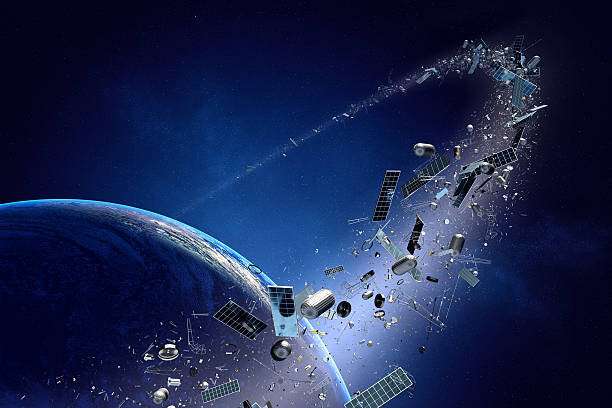
A Russian KOSMOS 2499 satellite broke up last month—for a second time—according to the Space Force's 18th Space Defense Squadron. In a recent tweet, the Space Force said they are currently tracking 85 individual pieces of debris at an altitude of 1,169 km (726 miles). The breakup occurred on January 4, 2023, but the reason for the disintegration remains unknown.
At this high altitude, it will take decades for the debris to deorbit and burn up in the Earth's atmosphere. The debris is located in an increasingly busy region in Earth's orbit.
#18SDS has confirmed the breakup of COSMOS 2499 (#39765, 2014-028E)—occurred Jan 4, 2023 at appx 0357 UTC. Tracking 85 associated pieces at est 1169 km altitude—analysis ongoing. #spacedebris#space@SpaceTrackOrg@US_SpaceCom@ussfspoc
— 18th Space Defense Squadron (@18thSDS) February 7, 2023
But this is actually the second breakup event of Kosmos 2499.
Juice’s odyssey of exploration
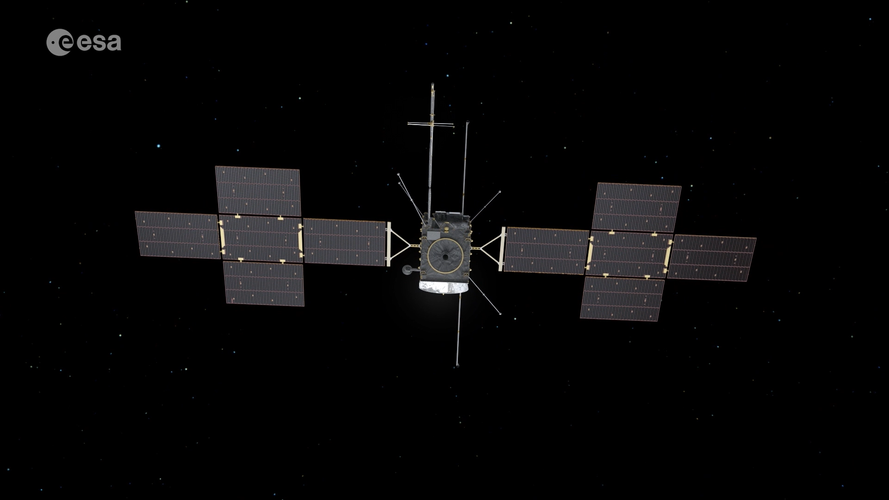 Video:
00:03:21
Three-minute cinematic video trailer presenting ESA’s Jupiter Icy Moons Explorer (Juice) mission
Video:
00:03:21
Three-minute cinematic video trailer presenting ESA’s Jupiter Icy Moons Explorer (Juice) mission Sound test of Hera asteroid mission antenna
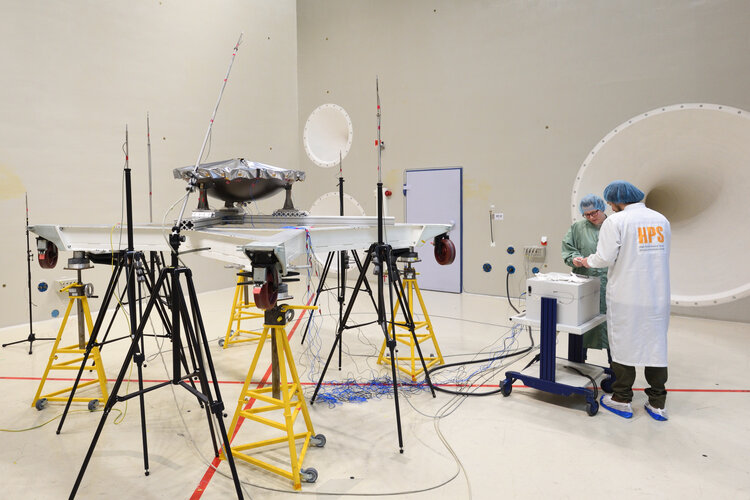 Image:
Sound test of Hera asteroid mission antenna
Image:
Sound test of Hera asteroid mission antenna More lunar missions means more space junk around the Moon—two astronomers are building a catalog to track the trash
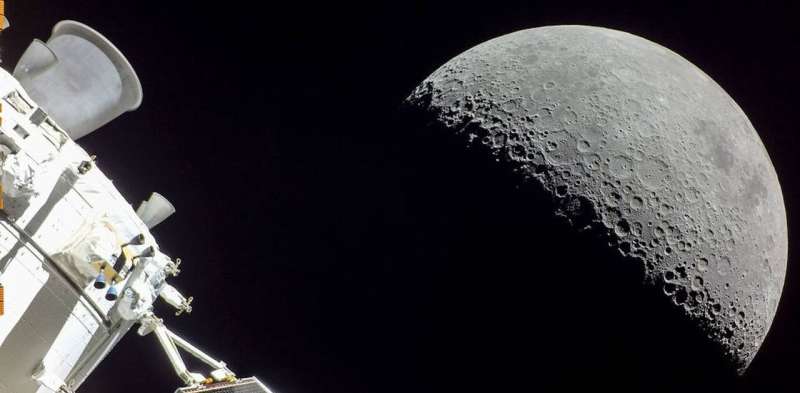
Scientists and government agencies have been worried about the space junk surrounding Earth for decades. But humanity's starry ambitions are farther reaching than the space just around Earth. Ever since the 1960s with the launch of the Apollo program and the emergence of the space race between the U.S. and Soviet Union, people have been leaving trash around the moon, too.
Today, experts estimate that there are a few dozen pieces of space junk like spent rocket bodies, defunct satellites and mission-related debris orbiting in cislunar space—the space between Earth and the moon and the area around the moon. While this isn't yet a large amount of junk, astronomers have very little information about where these pieces of space debris are, let alone what they are and how they got there.
Sentinel-4 set to join next weather satellite
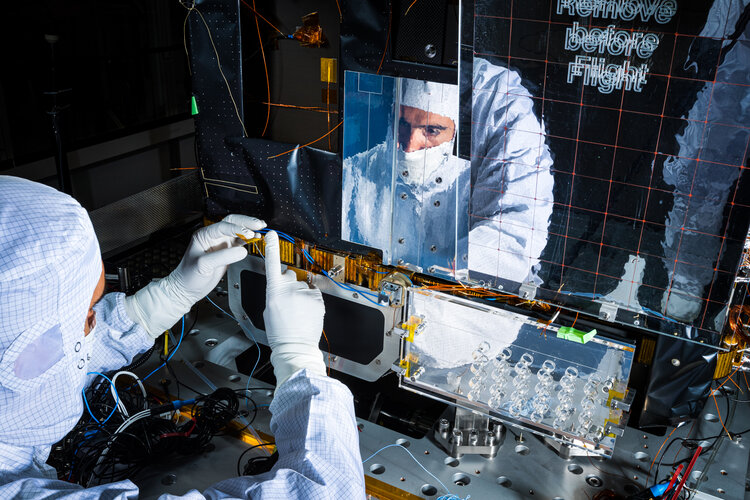
Copernicus Sentinel-4, which is set to play a key role in monitoring air quality over Europe, is ready to be fitted to its host, the first Meteosat Third Generation Sounder weather satellite.
Copernicus Sentinel-4 is a state-of-the-art ultraviolet, visible, near-infrared spectrometer instrument that has been developed to deliver hourly high-resolution measurements of trace gases such as nitrogen dioxide, ozone, sulphur dioxide and formaldehyde, as well as aerosols.
Galileo signal component tested for Internet of Things use

One of Europe's Galileo satellites has been reconfigured to emit a new signal component optimised to serve low-end receiver devices and Internet of Things applications.
Spanish lagoon used to better understand wet-to-dry transition of Mars
 In the ongoing search for signs of life on Mars, a new study proposes focusing on "time-resolved analogs" - dynamic and similar Earth environments where changes can be analyzed over many years.
Alberto Fairen, visiting scientist of astronomy at Cornell University, led an investigation in the extremely salty Tirez lagoon in central Spain, which had experienced alternating dry and wet period
In the ongoing search for signs of life on Mars, a new study proposes focusing on "time-resolved analogs" - dynamic and similar Earth environments where changes can be analyzed over many years.
Alberto Fairen, visiting scientist of astronomy at Cornell University, led an investigation in the extremely salty Tirez lagoon in central Spain, which had experienced alternating dry and wet period 































